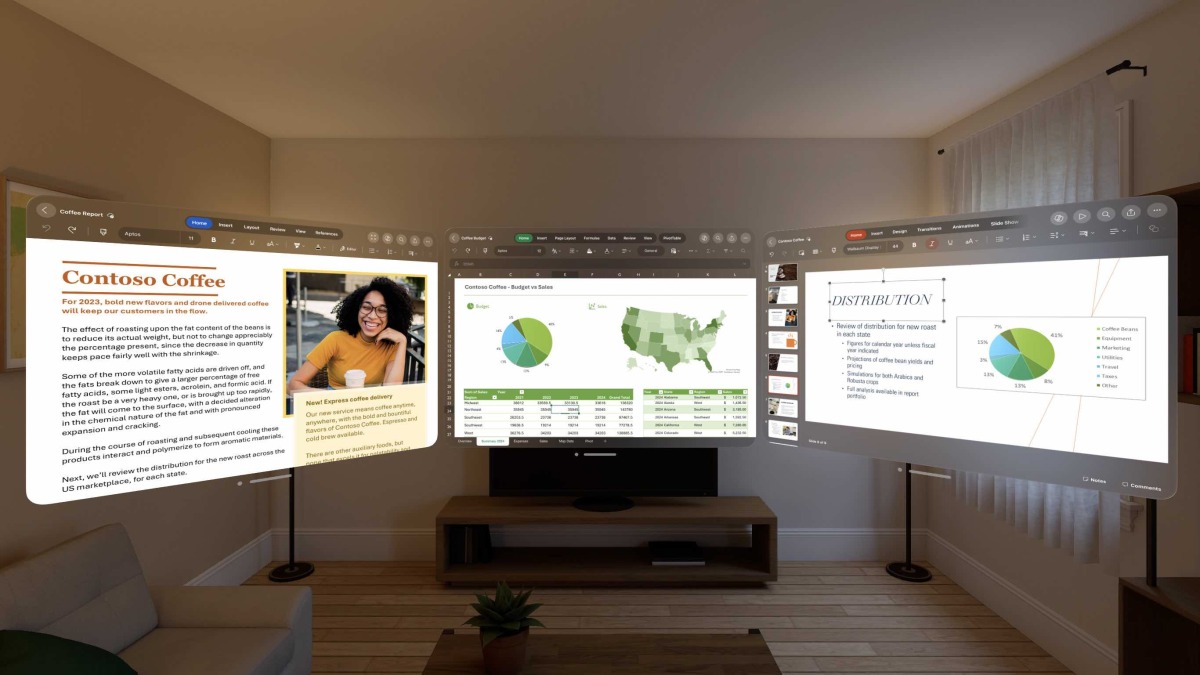- “The company is still working on releasing a more afforable vision product with fewer features before the end of 2025”
- Apple’s first foray into the world of AR and VR was always going to be, at best, ‘niche’.
At this point it’s a given that Apple’s Vision Pro isn’t selling in huge numbers, with the latest doom and gloom suggesting that the lack of take up is influencing the development and release of its sequel.
According to The Information, insiders at the makers of one of Vision Pro’s essential components have been informed of a reduction in demand for that component and that work on a sequel product (and subsequent orders relating to that product) have been paused.
Instead, “the company is still working on releasing a more afforable vision product with fewer features before the end of 2025.”
So not actually better… But certainly actually cheaper
With a $3,499 price tag and a release in a single country (USA) you don’t have to be an expert to note that Apple’s first foray into the world of AR and VR was always going to be, at best, ‘niche’. Vision Pro always existed more because Apple ‘can’ rather than whether Apple ‘should’, with the entire enterprise hopefully breaking through in just sufficient numbers to justify the development of an inevitable “AR for the rest of us” product that would follow.

A delayed global rollout (though now set in stone with pre-orders in progress) and rumours of production slowdown in line with dwindling demand were always going to take a bite out of Apple’s AR plans, but the real news here is that Apple are smart enough to know that another ‘better’ $3,499 headset is not the way to go. And while Apple can afford its ambitious moonshot products, the once largest company in the world by market cap (now in third behind Nvidia and Microsoft) certainly isn’t a charity.
Common sense therefore suggests that a cheaper product was always their next focus and today’s news only confirms this.
Common sense therefore suggests that a cheaper product was always their next focus and today’s news only confirms this.
And it’s fairly easy to spot ways in which a Vision (i.e. not Vision Pro) headset can save some manufacturing spend.
An eye on costs
Vision Pro’s EyeSight feature (projecting the fake, animated eyes of the wearer onto a curved OLED screen for others to view) always felt like an overkill solution to a problem that nobody had. And it seems that the inclusion of the unique feature – making Vision Pro users at least appear to be more ‘present’ in the world around them – hasn’t been the ‘killer app’ that made the headset any more popular or particularly ‘better’ than far cheaper rivals. (Meta’s Quest 3 starts at $499.) In fact, it’s creeped most users out.

Losing the (costly, fiddly to implement, unwanted and creepy) feature would therefore make sense and Apple have worked similar ‘magic’ in the past, ditching the (costly, fiddly to implement, unwanted and difficult to use) ForceTouch screen pressure system implemented on the iPhone X from their more recent phones.
And while a glass front and a magnesium body sound great, one has to ask ‘wouldn’t plastic do’?
Upgrades and downgrades
It’s hard to imagine Apple downgrading any of the resolution of display or exemplary eye and head tracking that have given Vision Pro the edge over the competition, and it’s to be hoped that inevitable economies of scale and production refinement will produce lower cost units able to perform the same cutting edge tasks. And Apple’s Vision OS – upgraded to version 2 at their recent WWDC developers’ event – only continues to make the entire ‘head in a bucket’ experience slicker and more plausible-for-normals than any of the competition.

But perhaps the biggest breakthrough could be in the ditching of Apple’s requirement for specific bespoke Zeiss lenses for users that wear glasses. If Apple could cut out the requirement of every sale requiring a measurement and additional cost for these lenses – creating the one size fits all solution that Meta nailed from the outset for their Quests – then they’ll be leaps and bounds over where Vision Pro currently sits.

While Apple’s first moonshot AR/VR experiment may go down in history as a failure akin to their first foray into mobile computing (Apple Newton, anyone?) its successor may still hit paydirt.
Anyone heard of the iPhone?
